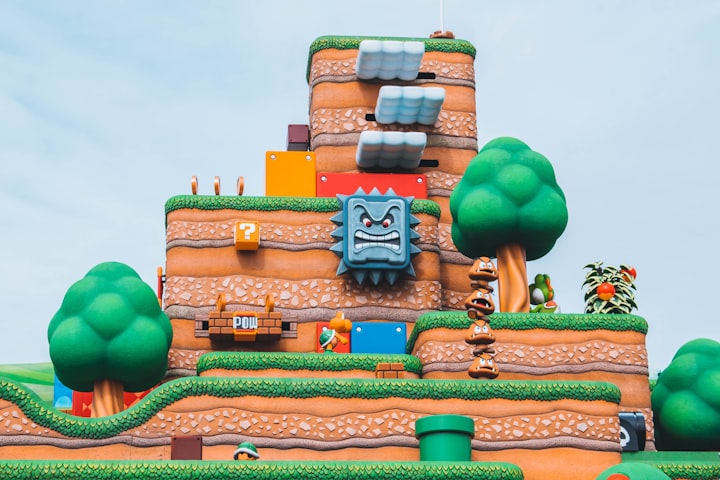Super Mario Bros. (SMB) is a video game series that needs no introduction. With over three decades of rich history, it's a legacy that's deeply ingrained in the world's cultural fabric. Its influence extends beyond the realm of gaming and into mainstream media, making it an undeniable global phenomenon.
The origins of Super Mario Bros. trace back to 1981 when a young game designer named Shigeru Miyamoto was working at Nintendo, a Japanese company known at the time for its playing cards and novelty toys. Miyamoto was assigned a challenging task: create an arcade game that would resonate with American audiences. The game he designed, Donkey Kong, featured a protagonist named Jumpman, who later became Mario, the plucky plumber we know today.
Miyamoto's Mario, an embodiment of the everyman, was a revelation in the video game industry. He stood in stark contrast to the popular characters of the time, primarily aliens or monsters, imbuing the game with a sense of relatability that was warmly embraced by players. The name "Mario" was reportedly inspired by Mario Segale, the landlord of Nintendo's American warehouse.
In 1983, Mario got his first titular game, "Mario Bros." This game, released for the Nintendo Entertainment System (NES), was the genesis of Mario's iconic universe. It introduced Luigi, Mario's younger brother, and the core gameplay mechanics that would become staples in the series. The story revolved around Mario and Luigi's attempts to exterminate creatures emerging from the sewers of New York.
The critical moment, however, came in 1985 with the release of "Super Mario Bros." SMB was a paradigm shift, popularizing the side-scrolling platformer genre and setting a new standard for video games. The game's design was guided by a philosophy of intuitive gameplay, with the opening levels masterfully teaching players the mechanics without any explicit instructions. It presented a vibrant world teeming with distinct enemies, power-ups, and secrets, a huge leap from the single-screen format of its predecessor.
SMB's story was simple: Princess Toadstool has been kidnapped by the villainous Bowser, and it's up to the Mario Bros. to rescue her. The premise was archetypal but worked as an effective hook. The game's captivating world, coupled with its balanced difficulty curve, ensured players remained engaged from start to finish. SMB became the best-selling game for the NES, selling over 40 million copies, a testament to its universal appeal.
The success of SMB paved the way for numerous sequels, each introducing novel elements that expanded the Mario universe. "Super Mario Bros. 2," released in 1988 in the US, deviated significantly from the original in terms of gameplay mechanics, largely due to it originally being a different game in Japan titled "Doki Doki Panic." However, "Super Mario Bros. 3," released in 1990, returned to the series' roots while adding power-ups, new enemies, and a map screen, raising the bar once again.
Nintendo's launch of the Super Nintendo Entertainment System (SNES) in 1991 opened new horizons for the franchise. The first game for this console, "Super Mario World," showcased enhanced graphics and sound capabilities while introducing Yoshi, a rideable dinosaur character who quickly became a fan favorite. This game extended the tradition of exploration, presenting a vast world filled with secrets and branching paths.
The release of "Super Mario 64" for the Nintendo 64 in 1996 marked another significant milestone. It was Mario's first venture into a fully rendered 3D world, which at the time was a revolutionary concept. Mario could now run, jump
, and explore in all directions. This shift represented a new era for the franchise, setting a precedent for the 3D platformers that would follow.
The following decade saw the release of several successful titles, including "Super Mario Sunshine" on GameCube, "Super Mario Galaxy" and its sequel on the Wii, each introducing fresh concepts and mechanics while staying true to the core elements that fans loved.
On the handheld front, Mario made his presence felt with titles like "Super Mario Land" and "Super Mario Land 2: 6 Golden Coins" on the Game Boy, and "Super Mario 3D Land" and "Super Mario 3D World" on the Nintendo 3DS and Wii U respectively. These games echoed the console experience, showing that the charm of Mario could be condensed into a pocket-friendly format.
In recent years, the "New Super Mario Bros." series, starting on the Nintendo DS in 2006, served as a modern homage to the original games, providing classic 2D platforming with updated graphics. This series continued onto the Wii, 3DS, and Wii U. "Super Mario Maker" (Wii U, 2015) and its sequel (Switch, 2019) took a creative turn, giving players the tools to design their own Mario levels and share them online.
Despite being a long-standing franchise, Super Mario Bros. has continually adapted to the times, successfully integrating emerging technologies and design philosophies. The series’ journey from 8-bit sprites to fully realized 3D environments is a testament to its progressive outlook.
Super Mario Bros. is not just a game series—it's a phenomenon that has transcended generations. Its influence can be seen in numerous other franchises, and it has shaped the gaming industry as a whole. Each iteration is a testament to the creative genius of Nintendo and its enduring commitment to delivering unforgettable gaming experiences.
The legacy of Super Mario Bros. is firmly rooted in its ability to bring joy to people of all ages and walks of life. Whether it's the excitement of discovering a secret level, the satisfaction of besting a challenging boss, or the simple pleasure of guiding Mario toward the end-level flag, the series delivers moments of pure, unadulterated fun.
About the Creator
Mack Devlin
Writer, educator, and follower of Christ. Passionate about social justice. Living with a disability has taught me that knowledge is strength.
We are curators of emotions, explorers of the human psyche, and custodians of the narrative.







Comments
There are no comments for this story
Be the first to respond and start the conversation.